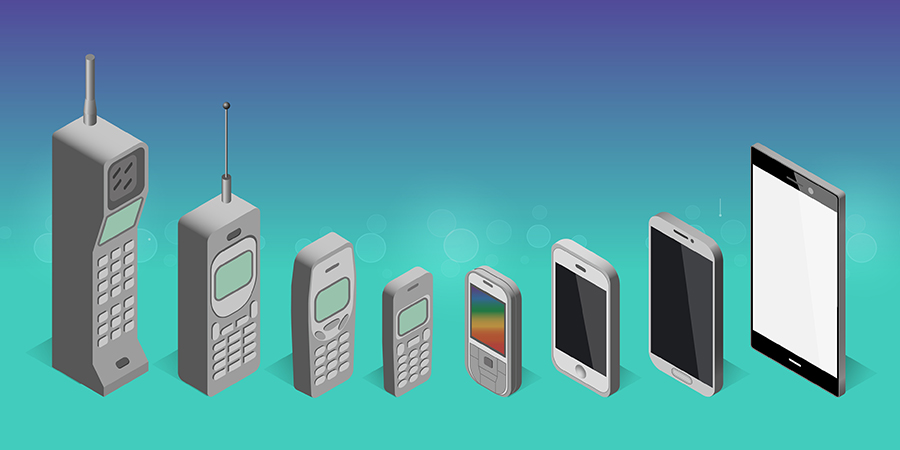Mobile phones have been shaped by a half-century of innovation, from the brick-sized handsets popular with stockbrokers of yesteryear to the extremely powerful computers that reside in all of our pockets today.
A timeline of how we got here:
On April 3, 1973, a Motorola engineer uses a portable phone called a DynaTAC to place the first call.
From Sixth Avenue in New York, Martin Cooper contacts Joel Engel, a rival who works for Bell Labs. The first cell phone, however, doesn't hit the market for another 10 years. Motorola’s DynaTAC 8000X goes on sale in the United States in 1983 for a sizable $3,995. It is known as the "brick," as it is 33 cm in length and just under a kilogram in weight.
On December 3, 1992, Richard Jarvis, a Vodafone employee, receives the first ever text message. "Merry Christmas" is sent to him by his machine. The message would eventually trade as an NFT at auction for $150,000 in 2021. The Finnish company Nokia launches a series of technological advancements that stretch the limits of mobile. "Snake," its 6110 gaming model smartphone, is unveiled to the general public in 1997. The 3210 introduces predictive writing to the world the same year, and the 7110 becomes the first phone to use wireless networks for surfing. The affordable, durable 1100 model from Nokia is released in 2003 with a focus on poor nations and becomes the best-selling phone in history, selling some 250 million devices.
Japan is the first nation to use a 3G mobile network in 2001, enabling high-speed internet connectivity. It follows closely behind other Japanese telecommunications inventions.
The Sharp SH04, the first phone with a built-in back camera, debuts a year after the Kyocera VP-210, the first with video calling features.
When introducing the iPhone to a cheering audience in 2007, Steve Jobs declares, "Today, Apple is going to reinvent the phone."
He promises a single device that will combine an iPod, a mobile phone and an "internet communicator" and sell for $499 to $599. In 2008, the App Store is unveiled. The first smartphone with Google's Android operating system, the HTC Dream, is launched that same year.
Inaugurating in 2009, WhatsApp is soon followed by various other messenger services and applications like Signal, WeChat, Telegram and Viber.
In 2012, these applications, which rely on the internet rather than conventional networks, surpassed SMS in popularity. The first metropolis to provide users with extremely fast 4G coverage is Stockholm.
When Siri debuts in 2011, users of Apple's iPhone 4S are now able to ask their phone to send messages, make calls, schedule meetings and even perform web searches.
In the years that follow, Google and Amazon compete with their respective creations of rival speech assistants. When Shigetaka Kurita's tiny faces, which he first drew in 1999, are eventually added to the iPhone's character collection, "emoji" fever sweeps the globe.
South Korea is the first nation to offer 5G service on April 5, 2019, with a guarantee of even faster navigation. The Galaxy Fold and Huawei's Mate X devices are released by Samsung and Samsung's Chinese rival Huawei in that same year.
…and where we stand today:
The modern issue with cell phones is that users spend too much time staring at them — too much time consumed by them. At least, that's what is claimed by the man who created them fifty years ago.
According to Martin Cooper, the American engineer known as the "Father of the Cell Phone," these handy little gadgets we all carry around in our pockets have almost limitless potential and may one day even aid in the treatment of illness. However, we might all be a little obsessed right now.
"I am devastated when I see somebody crossing the street and looking at their cell phone. They are out of their minds," the 94-year-old told AFP from his office in Del Mar, California. "But after a few people get run over by cars, they'll figure it out," he joked.
Cooper switches effortlessly between YouTube, his email, photos, and the controls for his hearing aid while using an Apple Watch and a high-end iPhone. Every time a new model is released, he enthusiastically reviews it. It is a welcome yet careful evaluation. And he acknowledges that with millions of apps accessible, it can sometimes feel overwhelming.











